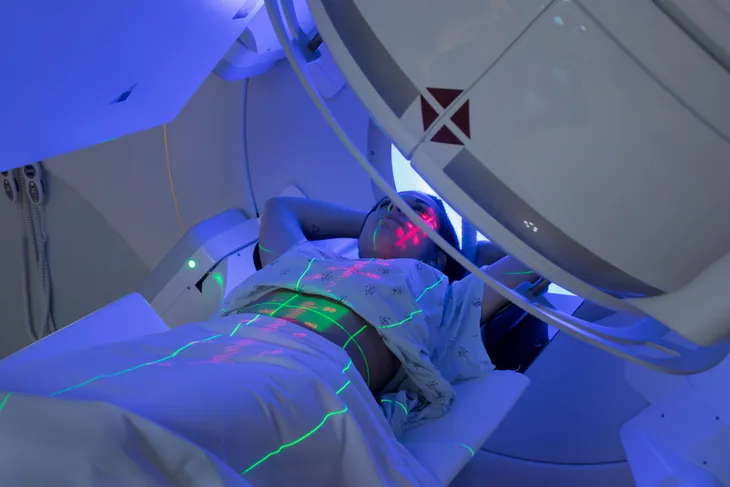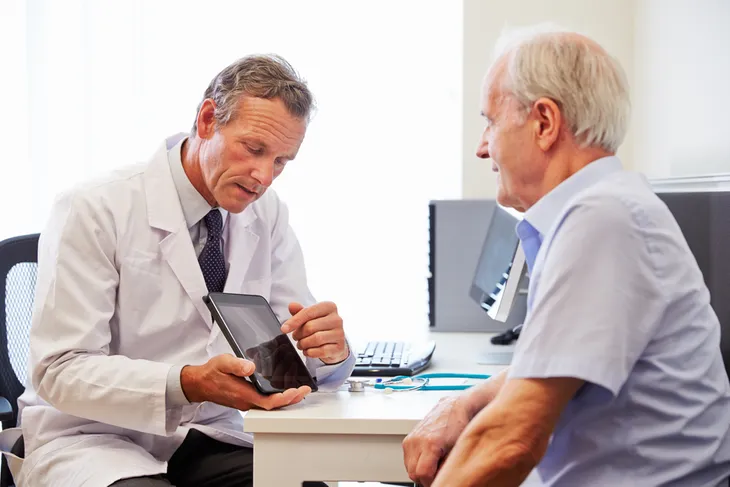Around the world, more than 14 million new cases of cancer are diagnosed every single year. Surgery, chemotherapy, immunotherapy, hormone therapy, and targeted therapy are among the most common treatments. Although increasingly, more and more doctors are turning to radiation therapy.
It is estimated that approximately 50-percent of all cancer patients can benefit from radiation therapy, which makes understanding it, breaking down the various symptoms, and knowing what to expect, an important part of living through treatment. Today, we’re going to highlight the short-and-long-term side effects, as well as illuminate the patient experience to better understand all that can be expected when it comes to radiation therapy.
What Is Radiation Therapy?
Radiation therapy is used as a treatment for various types of cancer and relies on concentrated beams of radiation to destroy cancer cells. How this is accomplished is entirely dependent on the type of radiation therapy being used. Here are three types of radiation therapy:
- External beam radiation uses a machine that precisely targets the cancer cells with radiation beams capable of penetrating the body.
- Internal radiation therapy is often referred to as brachytherapy. This targeting occurs internally using a doctor-placed implant near the cancer site. This implant could be a tube, a wire, a capsule, a seed, or a pellet.
- Systemic radiation therapy happens internally as well, although the process is different. With this application, the patient is often asked to swallow or is injected with a radioactive substance that then travels through the body to find and destroy cancer cells.
The cancer type, stage, size, and location all factor into a doctor’s approach to radiation therapy, although each of the three applications shares a similar goal.
Why Doctors Use Radiation Therapy
So, what exactly is radiation therapy attempting to accomplish? Radiation therapy is used to cure or shrink cancer that is in its early stages. It’s also used to stop cancer from coming back somewhere else in the body, treat the symptoms of advanced cancers, and treat cancer that has returned.
External beam radiation is often used to treat breast cancer, lung cancer, prostate cancer, and colon cancer, as well as cancers of the head or neck, whereas internal radiation therapy is selected to target cancers found in specific areas of the body, such as the rectum, head and neck, and eye.
Early vs. Late Side Effects
The side effects of radiation therapy can be easily categorized in terms of early and late effects. Early side effects reference side effects that occur during or shortly following the treatment.
Feelings of fatigue and lethargy are common short-term effects of radiation therapy. Although, as our skin changes, those side effects tend to clear up after a week or two. Late side effects are more complicated and can sometimes take months or even years to manifest.
Radiation Therapy Side Effect: Skin Problems
Radiation therapy has been known to cause a wide array of skin problems, such as radiation dermatitis. Redness, irritation, or swelling in the treatment area are common.
Managing these symptoms often include a matter of protecting the area from sun exposure, wearing loose clothing, and washing with lukewarm water and mild soap. If you do experience symptoms of radiation dermatitis, you should speak with your doctor as soon as possible.
Radiation Therapy Side Effect: Hair Loss
Patients shouldn’t expect to lose all the hair on their body, but the process has been known to impact hair growth in the area being treated. Just as with symptoms of skin irritation, you’ll want to ensure that the affected area is covered up when exposed to the sun.
It’s worth noting, if your treatment requires radiation therapy directed at the head, then you may lose your hair. Even though it does grow back in most cases, it may come back thinner or of a different texture than it was before.
Localized Side Effects
The occurrence of some side effects can be relative to the area being treated. For instance, those receiving radiation therapy to the brain may experience headaches, nausea, vomiting, extreme tiredness, hearing loss, trouble with memory and speech, and sometimes even seizures.
Patients receiving radiation treatment to the head or neck may experience jaw stiffness; earaches; tooth decay; swelling of the gums, throat, or neck; trouble swallowing; and even changes in taste.
Rib fractures, heart complications, and lung damage should also be on your radar. Although rare, these less common side effects are still important to monitor and bring to your doctor’s attention.
What to Expect: Radiation Simulation
Radiation simulation is an integral part of the radiation therapy preparation process. Once your doctor has worked out an appropriate dosage amount and mapped out an effective treatment frequency, they’ll likely book you in for a radiation simulation.
Patients undergoing internal or systemic radiation therapy can skip ahead because radiation simulation is only a requirement for those preparing for external beam radiation treatment.
Preparation and planning are the primary goals of a radiation simulation. Your doctor will use the simulation to determine how to properly position your body, perform a computed tomography (CT) scan or an X-ray, and they’ll mark your body with a tiny tattoo meant to mark the area for treatment.
What to Expect: How It’s Performed
External beam radiation therapy leans on an impressive piece of technology called a linear accelerator. Linear accelerators produce X-ray energy by accelerating the movement of electrons and forcing them to collide with heavy metal. This X-ray energy is then focused on the predetermined target to shrink or halt the growth of certain cancer cells.
Therapy can often require daily treatment sessions, for up to 10-weeks, but with weekends off to give your normal cells a break. When you arrive for a session, your doctor will position your body on the treatment table in precisely the same way they did during your radiation simulation. You may be provided with protective coverings or shields as well.
Once securely in position, the linear accelerator is put to work, painlessly directing radiation at the required locations. The machine may move, and it may even make a buzzing sound over the course of the treatment. You’ll be the only person in the treatment room and the machine is in action for roughly 10 to 30-minutes depending on your treatment plan. You will, however, be in constant contact with your treatment team through an intercom.
What to Expect: Monitoring and Recovery
Radiation therapy can go on for as long as 10-weeks. As the weeks progress, you can expect multiple imaging scans, tests, and monitoring. Your treatment team will be monitoring how cancer and your body responds to radiation therapy. Your job in all of this is to carefully monitor your own symptoms and report them back to your team appropriately.
Recovering from radiation therapy is a matter of managing whatever side effects your body happens to experience. As previously mentioned, many of the most common side effects of radiation therapy should clear up after a few months, although some can linger for months, even years after treatment has concluded.
Radiation Therapy Results
Tracking the results is a matter of monitoring. Your doctor should keep you updated as your treatment progresses, and multiple post-treatment scans are standard. Your doctor will use those scans to determine how your cancer has responded to radiation therapy. Some cases respond right away, some take longer, while others still fail to respond to treatment at all.
Radiation therapy can feel long and take a lot out of you, but it has been shown to elicit positive results in many cases. It can’t, however, help you navigate the emotional impact of health-related uncertainty and all that comes with cancer and cancer treatments. If you find yourself struggling to cope, understand that’s normal too. If you need support, the American Cancer Society has a great resource guide for navigating the emotional toll of treatment.













